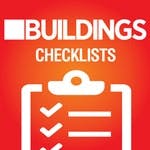Designing for Disaster with the Resilience Standard
A building standard focused on resilience is set to expand its reach. Version 2.0 of RELi aligns with LEED pilot credits to make it easier for project teams to adopt building resilience measures. The new version will also feature a credit catalog with a point system for easier navigation.
RELi’s evolution reflects shifting priorities in the design world. The focus on resilience is growing (and necessary) because observable changes in climate patterns require hardier buildings.
“There are big enough extreme weather events over the past 10 to 15 years and especially in the past five years in which people are starting to get that climate change is here and it’s not in the future anymore.” - Doug Pierce
Design decisions are traditionally based on historical weather data, explains Ariane Laxo, an interior designer and resilient design leader for HGA, a multidisciplinary design firm. But the frequency and intensity of severe weather is outpacing the historical conditions that design standards are based on, so many facilities are not built to withstand today’s weather.
Listen to Doug Pierce from Perkins+Will talk more about this topic.
BUILDINGS Podcast
The RELi Standard and the Future of Resilient Design
Doug Pierce explains the requisites and credits for RELi that are focused on things like climate change and adaptation, improving biodiversity, and social equity and social cohesion topics. Listen now >>
“There are big enough extreme weather events over the past 10 to 15 years and especially in the past five years in which people are starting to get that climate change is here and it’s not in the future anymore,” adds Doug Pierce, an architect for interdisciplinary architecture and design firm Perkins+Will and the principal investigator on RELi’s development. “We haven’t mitigated the impacts of climate change nearly enough. Hurricane Sandy was a huge marker for that.”
What is RELi?
The creation of RELi was sparked in part by Sandy in 2013 and partly by an extreme rain event in Duluth, Minnesota, the year before. The destructive rainfall was one of three 1,000-year rain events in eight years, Pierce explains.
The standard attempts to tackle resilient design from three fronts:
1. Climate change mitigation and adaptation
2. Loss of biodiversity
3. Social equity
“It’s a perfect storm,” Pierce explains. “We won’t be able to solve climate change and biodiversity loss if we don’t solve social equity. They all go together. If we lose biodiversity, we’re going to lose a lot of species and we need those species for systems to adapt to climate change. It’s going to get beyond our capacity to adapt, and we need to adapt to climate change that’s in the pipeline already.”
The coming update to the standard will join a growing conversation around resilience, says Laxo.
“My hope is that as RELi moves through the pilot phase and into a robust standard, it can provide a framework of how you wade into this new way of thinking when it comes to design,” Laxo mentions.
[Related: Social Justice is the New Company Culture]
She continues: “In the meantime, there are all kinds of efforts around this. When the GSA requests climate risk assessments, they have a process for how to do that and recommendations for how to get data to use in that process. The hazard mitigation and risk management world also has a robust stockpile of tools that may not have been used by designers in the past. Now that resilience is something we think about, we’re looking to those tools as a way to frame the conversation with our clients in the context of projects.”
How Facilities Managers Can Use RELi
Both the current version of the standard and the upcoming version 2.0 offer a solid framework to help facilities professionals start thinking about resilience. Use the credit catalog to guide conversations with your organization’s decision-makers about the best ways to strengthen your buildings.
Laxo recommends starting with a comprehensive risk assessment. This step requires an in-depth look at the ways in which your building is vulnerable. The results will impact the ways in which you use RELi and other planning tools to strengthen your building.
“There are great tools you can plug into depending on where the building is located,” Laxo explains. “Are you part of a portfolio of buildings? Are you part of a healthcare system, a county or city, or a standalone facility? In any case, you can draw from a hazard mitigation plan from your city, county or state. Hospitals do great hazard mitigation plans, but sometimes those departments aren’t talking to facilities management, so starting internal conversations is great for understanding what your organization is currently tracking.”
After you’ve completed the risk assessment, fine-tune your resilience strategy by choosing upgrades that improve your building’s ability to weather severe events. The risk assessment helps you customize your plans to your individual facility’s needs instead of using generic resilience advice that may not apply to your building.
[On topic: Building Resilience for Critical Facilities]
As you progress through this step, consider:
Business Continuity
How important is it to have your facility reopened within 72 hours? For a hospital, it’s a critical consideration. It may not be as important for an office building if many of the building’s employees can work remotely. “I wouldn’t say every single facility needs a backup generator or operable windows for passive survivability,” Laxo says. “There’s no one right answer for everyone.”
Hours of Operation
Any business with overnight habitation, like a hotel or any inpatient healthcare facility, has to consider thermal safety and passive survivability much more carefully than a retail development or office building, Pierce explains.
Community Needs
Don’t neglect the social equity element of resilience. Community cohesion is extremely important during a crisis, Pierce explains. Providing community resources during non-crisis periods helps lay the groundwork for later cooperation.
“Depending on the facility, you might tap into any number of credits in RELi that go with providing useful space to the community, like eating space or gardening space,” Pierce says. “If you know your neighbors and the resources in your neighborhood, you’re in a much better position to respond to a crisis.”
Resilient design principles can even save your organization money, a fact that you can emphasize when you try to persuade your organization to do resilience upgrades. Business continuity itself – or rather, a lack of it – can directly impact your organization’s bottom line by making you incapable of delivering goods and services, Pierce notes.
Free from BUILDINGS
Facility Condition Assessment Equipment Inventory Form
Do you currently know how your facility’s equipment is operating? If you conduct a facility condition assessment each year, you’d know. Get organized and help save money and time with this equipment inventory sheet. Get your copy >>
“Look at your day to day income and flow, and come to terms with what your brand value is and the trust your customers have in you,” Pierce says. “Being able to withstand an extreme storm or weather event will directly save you money if your building isn’t damaged. There can also be interim savings depending on the strategies you’re using, and if you’re seeking investors or a mortgage, your project may be a lower risk to whoever is loaning you money, which can reduce your cost of capital.”
Future renovations or construction should take resilient design into account, Laxo says. Architects and other building professionals should design your projects based on predictive data, not historical. That might mean that their designs reflect a magnitude of weather severity you haven’t seen yet.
For example, HGA’s solutions for clients have included a seawall to resist future sea level rise and a geothermal field that could expand into earmarked land next to it if higher production is needed in the future.
[Sustainable design: World’s First Powerhouse Hotel in Arctic Circle]
“The observable climate change has led to more clients asking questions or at least being more receptive when we say ‘We have noticed this change in this region, so let’s plan for it,’” says Laxo.
“People have also become more receptive as resilient design has become more of a thing that people know about. When we think about resilience on a project, we don’t want to talk to security people in a separate meeting from your landscape management folks who might be dealing with the stormwater overflow. We want to have risk conversations holistically so we can look at all the risks together, not making separate lists of things we need to consider in design.”
Two handpicked articles to read next:
About the Author
Janelle Penny
Editor-in-Chief at BUILDINGS
Janelle Penny has been with BUILDINGS since 2010. She is a two-time FOLIO: Eddie award winner who aims to deliver practical, actionable content for building owners and facilities professionals.


